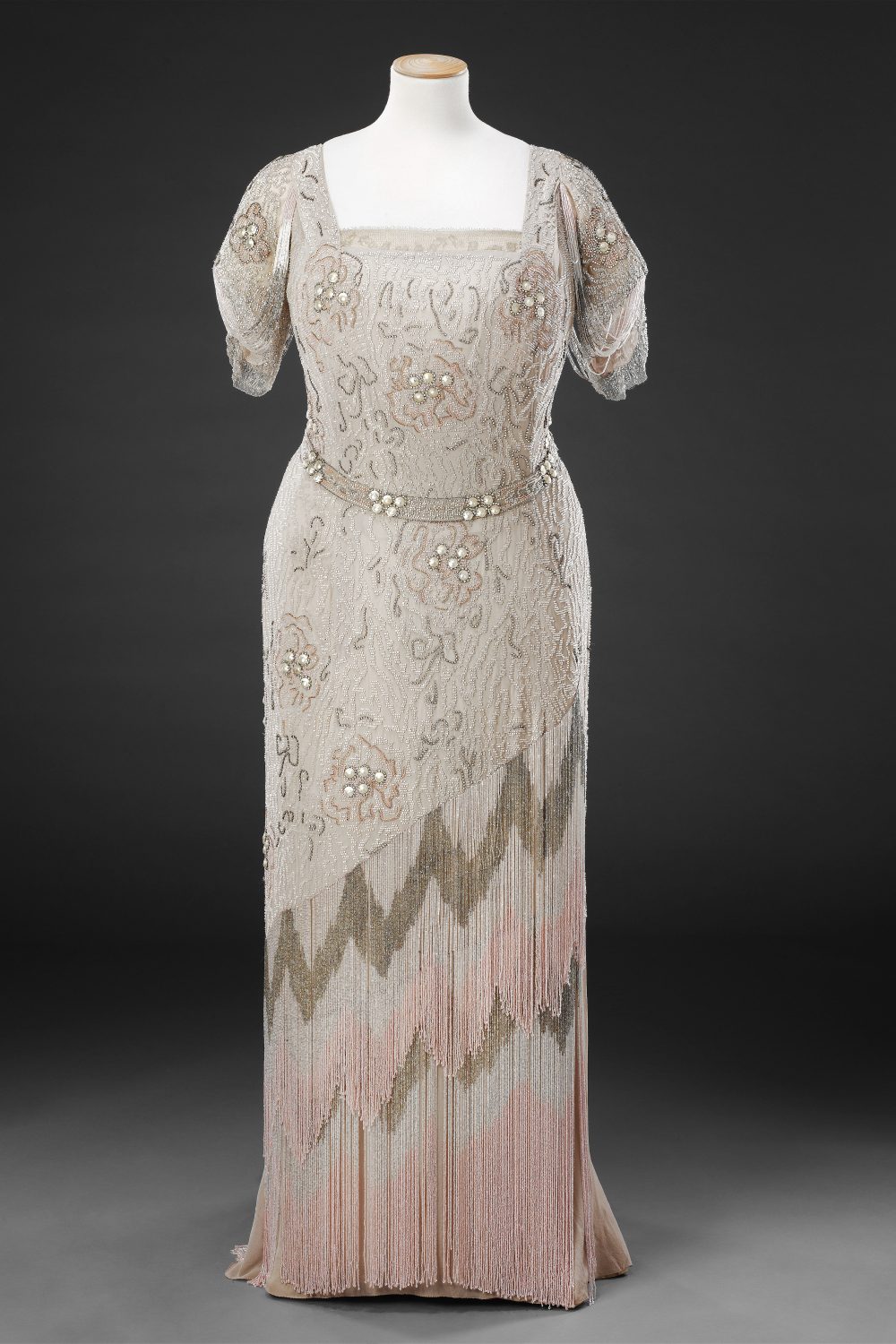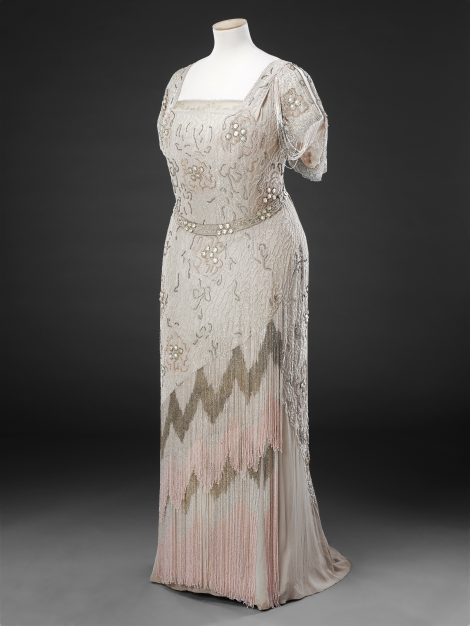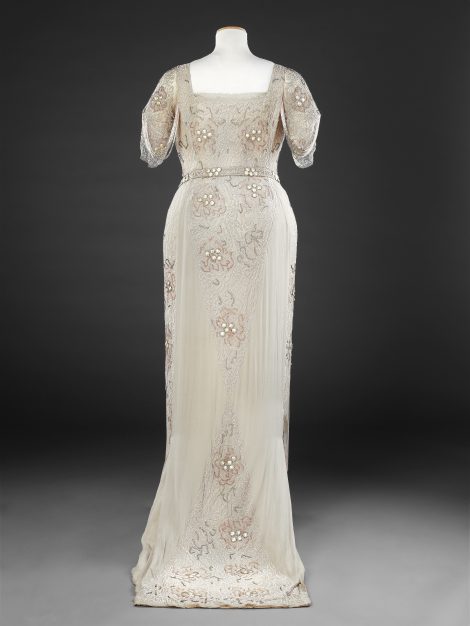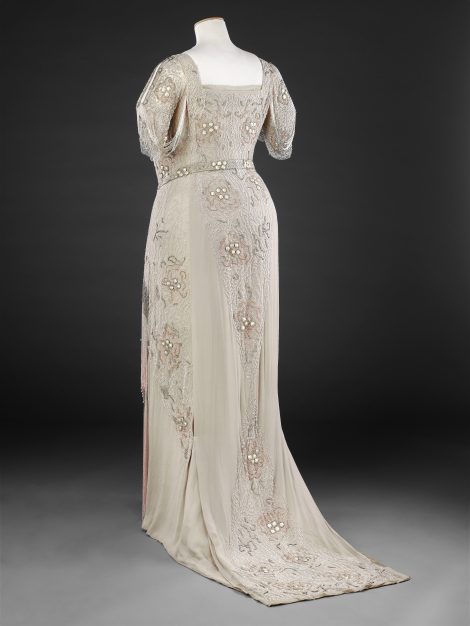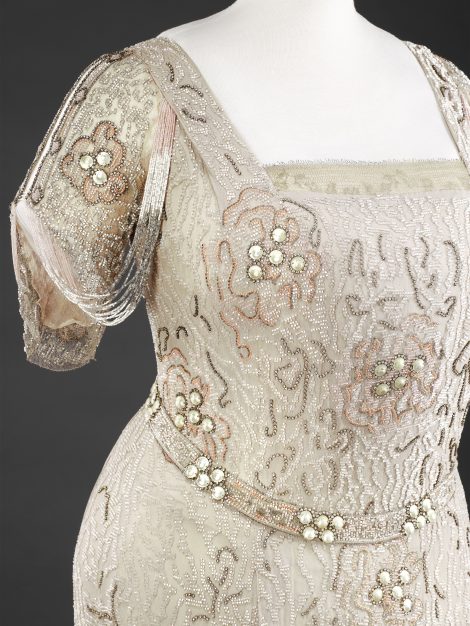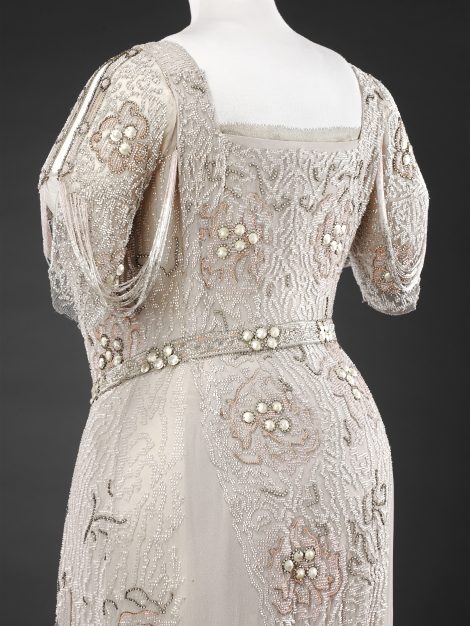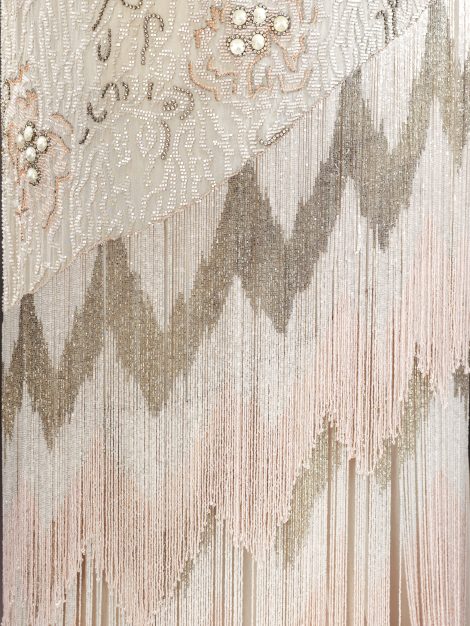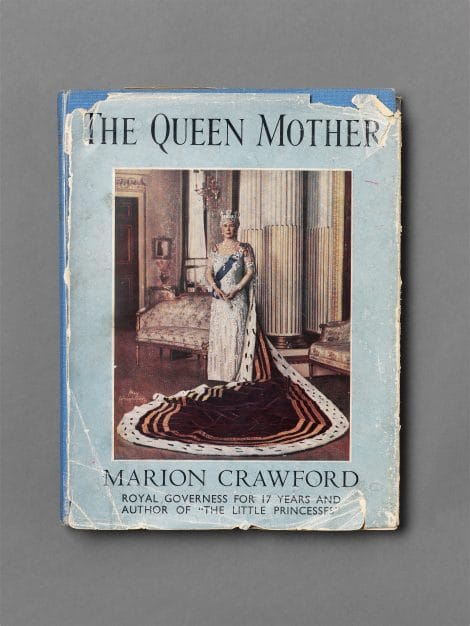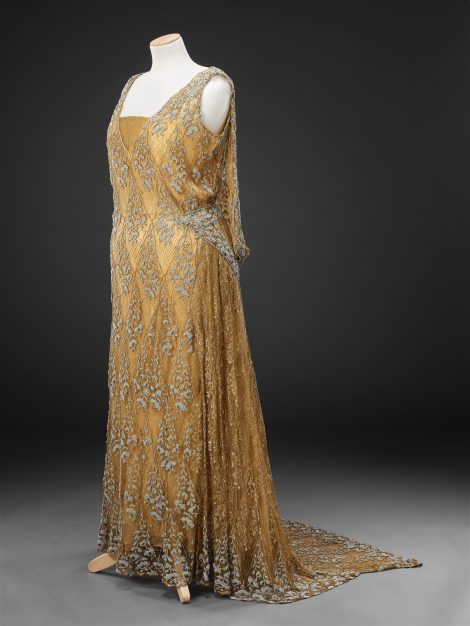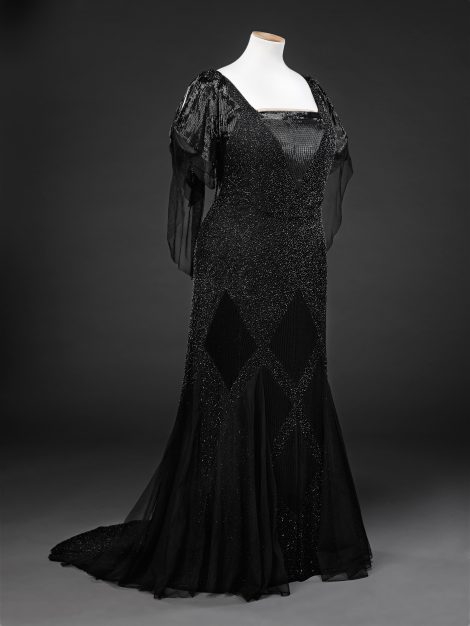Acquired from the Theatrical Ladies’ Guild
The John Bright Collection is fortunate to own a number of garments once worn by members of the British Royal Family, including this dress originally belonging to Queen Mary, consort to King George V, and grandmother to Queen Elizabeth II. The royal garments were acquired in April 1981 from the Theatrical Ladies’ Guild (now the Theatrical Guild), a charity for front of house and backstage workers. They were formerly the property of Princess Alice of Athlone, a patron of the Guild, who had died earlier in 1981, and were presented by her daughter Lady May Abel in order to raise funds for the charity. An evening dress worn by Princess Alice can be seen as a Related Item. Queen Mary was known to pass her clothes on to relatives, including to Princess Alice who was married to the Queen’s brother, Alexander of Teck, Earl of Athlone.
A tall, imposing figure with ramrod straight deportment, Queen Mary developed her distinctive regal style of dress after her husband’s accession to the throne in 1910, fashion taking a back seat to the grandeur appropriate to a royal consort. Her style made her immediately recognisable to her subjects, through both images in the press and her public appearances. Taking a practical approach to her wardrobe the Queen was said to have stored the exotic and luxurious fabrics that she was given from around the world until they could be made up into garments. Unlike some members of the Royal Family who were more distant from the throne, she limited herself to British court dressmakers; this grand formal evening gown was made by the London firm of Blancquaert & Co, also patronised by her husband’s slim and fashionable sister Queen Maud of Norway, with whom Queen Mary was close.
The dress is an example of the most ornate of the Queen’s gowns, appropriate for very formal or state occasions, and worn with a spectacular array of jewellery and insignia to produce an appearance of regal splendour. Its base of pale grey chiffon over satin (one of the soft colours she favoured) is encrusted with glittering grey, pink and silver beads, diamanté, and mother of pearl paillettes; beaded fringing cascades dramatically down the front of the skirt, graded in colour and length to form diagonally placed zigzag bands and hem, and adding a sense of movement to the light-catching decoration of the garment. Two elongated triangles of beading on the back, touching at their tips, provide an equally impressive appearance when the dress is seen from behind. In common with those of many other of the Queen’s gowns, the sleeves are not clean cut in line, but are broken up and softened as befits a mature woman; in this case they are made of translucent tulle and chiffon, are open down the outer side and swathed in festoons of beads. The characteristic vertical opening, giving access to a pocket in the lining, is also to be found on the right side of the skirt. A 1938 description by American journalist Janet Flanner could not be more apt, ‘Her trained court gowns have always been of the richest pale fabrics, shot with silver or gold; are elaborate in cut; in detail beaded, embroidered, gusseted, looped, draped, cap-sleeved…’ The dress worn by the Queen (or Queen Mother, as she had become) to the coronation of her son George VI in 1937 is extremely close in character to our dress, and can be seen, with her magnificent coronation robe, fully accessorised with jewellery and regalia, in Additional Images.
